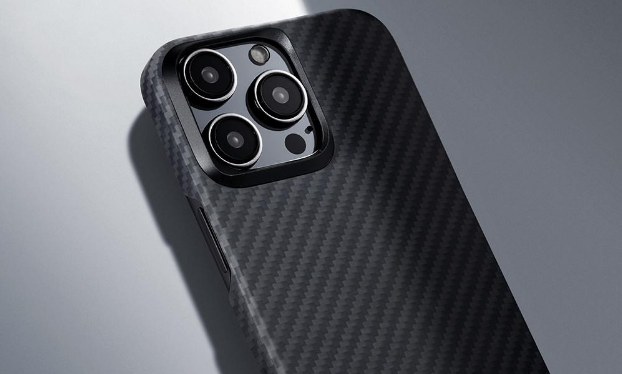In the competitive world of phone accessories, carbon fiber phone cases have gained a reputation for their stylish design and premium feel. But do these cases actually protect your phone better than other options like silicone or plastic cases?
What is Carbon Fiber?
Carbon fiber is a high-strength material made from thin, strong fibers of carbon that are woven together to create a durable, lightweight fabric. It’s most commonly used in industries where high-performance materials are needed, such as aerospace, automotive, and sports equipment. Carbon fiber is known for its rigidity, resistance to wear and tear, and exceptional strength-to-weight ratio. These characteristics make it an attractive option for protective phone cases.
What Does Carbon Fiber Provide in Terms of Protection?
- Durability and Scratch Resistance
One of the major advantages of carbon fiber phone cases is their remarkable durability. The material is highly resistant to scratches, which means your case will maintain its appearance even after extended use. Carbon fiber does not easily scuff or dent, unlike plastic or even leather cases, which may wear down over time. This makes carbon fiber an ideal choice for users who want their case to look sleek and pristine for as long as possible.
Additionally, carbon fiber has a natural resistance to corrosion, which adds to its longevity. This makes it a good option for those looking for a long-lasting, aesthetically pleasing phone case.
- High Strength-to-Weight Ratio
Carbon fiber is extremely strong while remaining incredibly lightweight. The high strength-to-weight ratio is what makes it such an attractive material for many different applications. In terms of phone cases, this means you can get a robust, rigid shell that doesn’t add a lot of bulk to your device. However, it is important to note that this strength comes from rigidity, not flexibility. While it may protect your phone from certain kinds of damage, its ability to absorb and dissipate shock is limited compared to more flexible materials like silicone or TPU.
- Aesthetic Appeal and Design
The woven pattern of carbon fiber gives phone cases a sleek, modern, and high-tech appearance. For those who value aesthetics, carbon fiber cases are often seen as a stylish way to protect your phone while maintaining a professional look. Many carbon fiber cases are also thin, allowing users to keep the slim profile of their phone intact.
Does Carbon Fiber Offer Shock Absorption?
One crucial aspect of phone protection is shock absorption, which prevents damage when the phone is dropped or subjected to impact. While carbon fiber is strong and rigid, it is not inherently designed to absorb shock in the way that softer, more flexible materials do.
Shock Absorption and Carbon Fiber
Unlike silicone, rubber, or other soft materials that can compress and deform to absorb the impact of a fall, carbon fiber lacks this ability. In fact, a solid carbon fiber case can sometimes transfer the shock from a fall directly to the phone, potentially causing damage to more sensitive components.
To improve shock protection, many carbon fiber cases are often paired with an inner layer of shock-absorbing materials such as TPU (thermoplastic polyurethane) or silicone. These materials can cushion the phone on the inside, allowing the case to maintain the sleek, high-end appearance of carbon fiber while providing additional impact protection.
Carbon Fiber vs. Other Materials
To get a clear picture of how carbon fiber phone cases compare to other options on the market, let’s examine them alongside some other popular materials:
– Silicone Cases: Silicone is an excellent shock absorber, providing a cushioned barrier between the phone and any impact. While silicone cases are often bulkier, they excel at protecting the phone from drops, scratches, and minor accidents. Carbon fiber, on the other hand, is more rigid and does not offer the same level of shock absorption, though it may be more resistant to long-term wear and tear.
– Plastic and TPU Cases: Plastic and TPU cases provide a balance between protection and flexibility. While plastic cases can crack on impact, TPU offers some degree of shock absorption and is commonly used in combination with carbon fiber for added durability and impact resistance. Carbon fiber, when paired with TPU or a similar inner layer, offers both aesthetic appeal and better all-around protection.
– Leather Cases: Leather is often chosen for its luxurious appearance and feel. While it can protect against minor scratches and light impacts, it does not provide the level of shock absorption needed for serious drop protection. Carbon fiber, being more rigid, offers better protection against abrasions but falls short in terms of absorbing the force of a drop.
Should You Invest in a Carbon Fiber Phone Case?
The decision to invest in a carbon fiber phone case depends on what kind of protection you’re looking for. While carbon fiber phone cases provide exceptional durability, scratch resistance, and a sleek, stylish look, they do not necessarily offer superior shock absorption compared to other materials.
For users who want a slim, durable, and attractive case, carbon fiber is a great option. However, if shock protection is a primary concern, it’s worth considering cases that combine carbon fiber with softer, more flexible materials to enhance impact resistance.
Ultimately, the best choice depends on your individual needs and preferences, as well as how much protection you’re seeking for your device.


